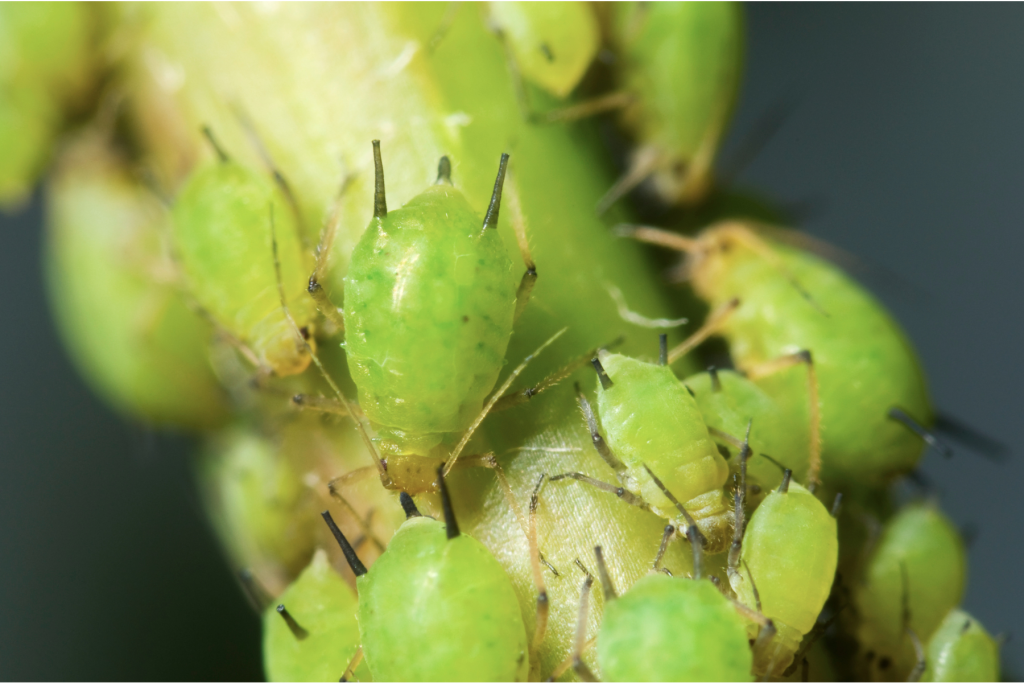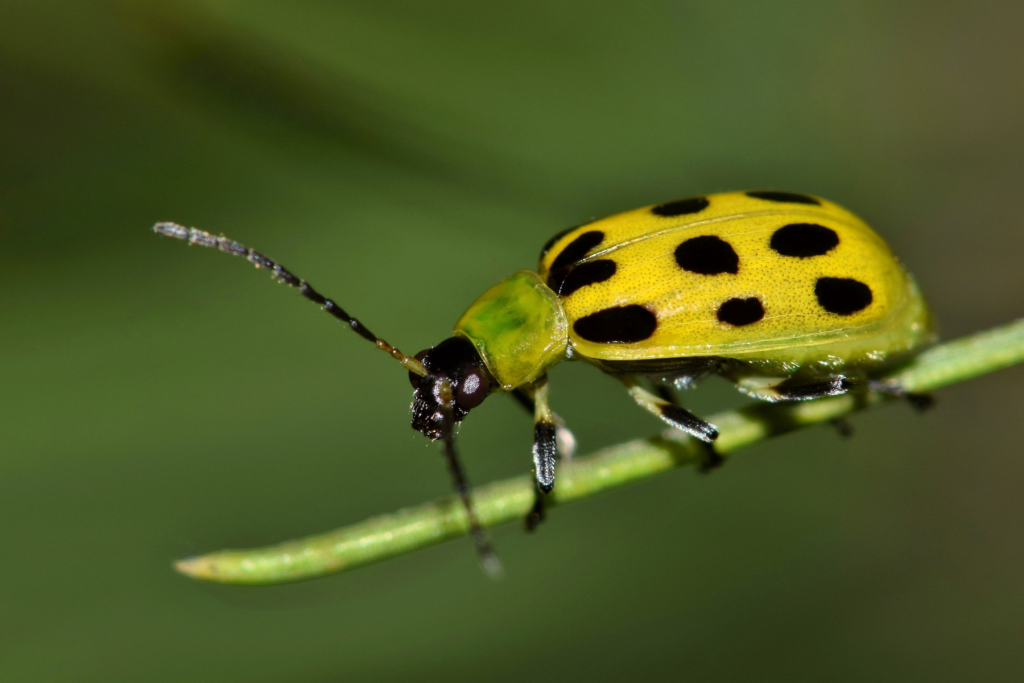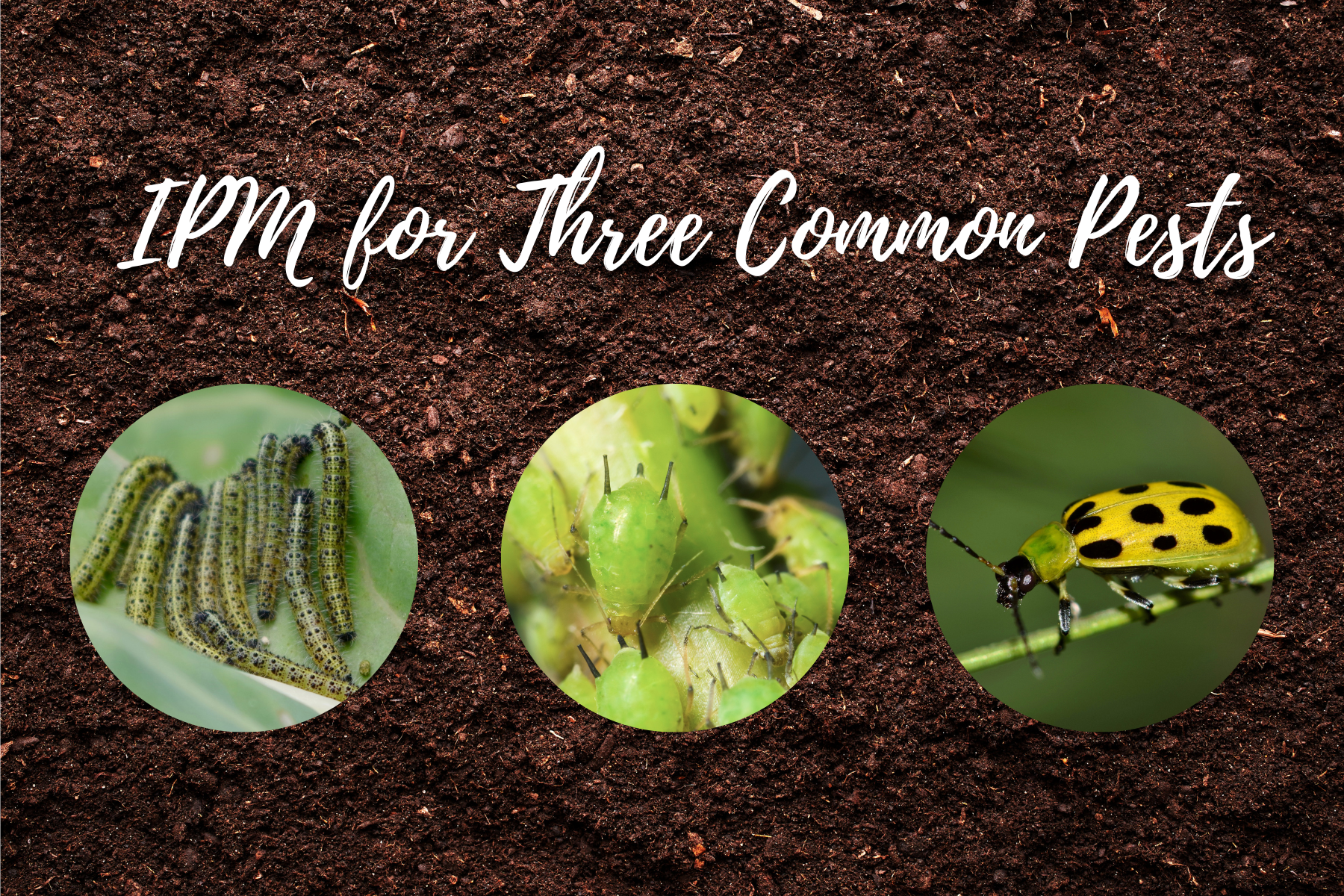In a 2022 Coffee and Pest Management webinar, Dr. Laura Ingwell, an Assistant Professor in Horticulture Entomology at Purdue University, described Integrated Pest Management for three different pests. Dr. Ingwell takes a look at cabbage worms, aphids, and cucumber beetles.
If you want to learn more about our “Coffee and” webinars, be sure to check the page on our website. Learn more about our Urban and Small Farms Program to see if you are eligible for free soil testing and other services.
Integrate Pest Management (IPM) is an “ecosystem-based strategy that focuses on long-term prevention of pests and their damage through a combination of techniques.” IPM uses variety/cultivar selection, timing, location, habitat manipulation, biological controls, and as a last result, pesticides to manage the pests in your farm and garden.
Cabbage Worms

Cabbage worms go through complete metamorphoses. Larvae are the dangerous form of this insect to our plants. The bigger the larvae get, the more they eat the plant. Once they complete their larval stage, they go through a pupal phase where they make the transition to adulthood. After the adults mate, they lay eggs. The best way to manage cabbage worms is preventing the adults from laying eggs on your plants. If you’re too late, you can address them as small caterpillars.
Crop selection can be used to prevent cabbage worms. Take notes and see which crops are chewed most in your garden, avoid planting those the following year. Another tool is exclusion. Use low tunnels to add a physical barrier keeping the moths from making contact with your plants. Biological controls such as tachinid flies, parasitic wasps, and predatory stinkbugs are natural enemies to cabbage worms. Chemical controls are a last resort, but foliar sprays of Bt are an effective organic option.
Aphids

Aphids are small and sneaky. They feed on plants with a sucking mouthpart much like a straw. They can kill seedlings and young transplants and vector plant viruses. Thier direct feeding on plant sap results in excess sugar that the insect excretes in the form of honeydew. The honeydew attracts other insects, like ants, wasps and bees, and also facilitates the growth of sooty mold, a black-white powdery substance which inhibits photosynthesis. Aphids undergo incomplete metamorphosis. The juveniles look like miniature versions of the adults. They also give live births, so you won’t find any eggs. There are both winged forms, for long distance dispersal, and wingless forms. Cultural controls include monitoring your plants and the plants around them for the presence of aphids and their natural enemies. Biological controls include parasitic wasps, lacewings, ladybeetles, minute pirate bugs, and syrphid flies. If natural enemies are present, just monitor the population to see if they continue to build or remain the same/decline. If cultural and biological controls fail, chemical controls are a last resort. Horticultural soaps and oils can be effective in a home garden setting.
Cucumber Beetles

There are two different species of cucumber beetles: striped and spotted. Striped cucumber beetles only feed on cucurbits, whereas spotted cucumber beetles are not as picky. All of them can transmit a bacterium that leads to bacterial wilt. There are two peak times during the growing season when adults are present and transmitting the disease – early spring when they are looking to feed and lay eggs and, in the late summer, when the second generation is preparing to overwinter in the soil. A major portion of their lifecycle takes place in the soil. Cultural controls include delayed planting. Waiting to plant any cucurbits in the spring prevents the adults that overwintered from finding food when they emerge from weedy habitat where they have overwintered. Mechanical controls include exclusion with a screen that will allow small beneficial insects in but not cucumber beetles. Spiders are a great biological control. Chemical controls such as foliar sprays and powders can be used but only as a last resort.
If you want to learn more about IPM other resources include the Purdue Consumer Horticulture website, the Purdue Entomology Extension Vegetable Website, the Purdue Entomology Extension Fruit Website, and the Purdue Plant and Pest Diagnostic Laboratory.

